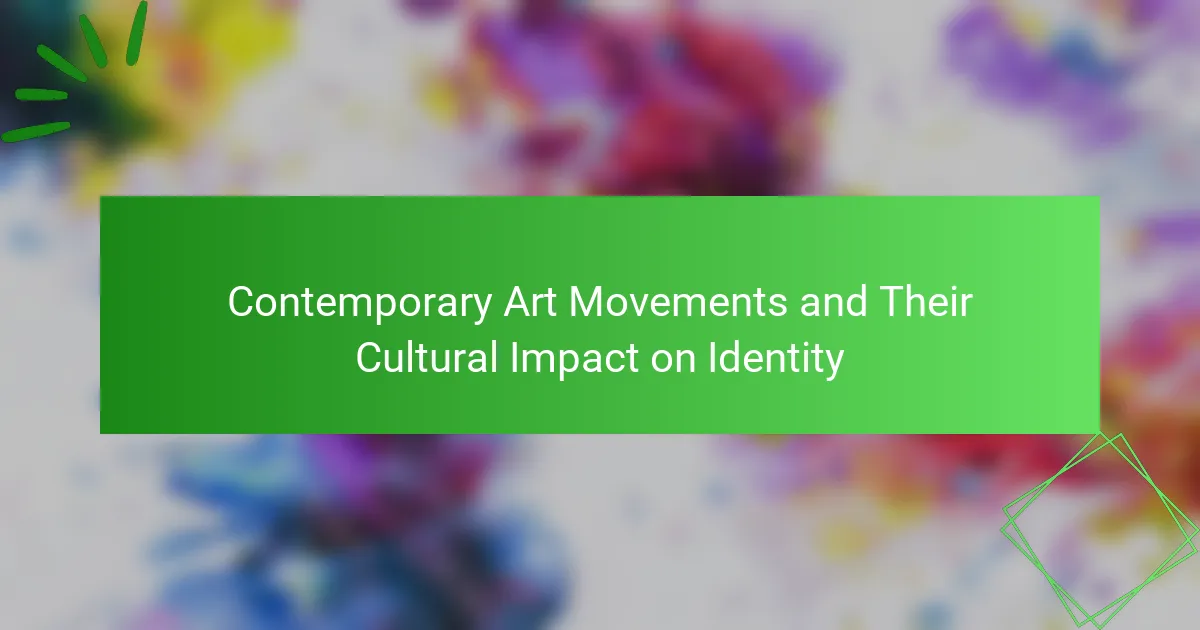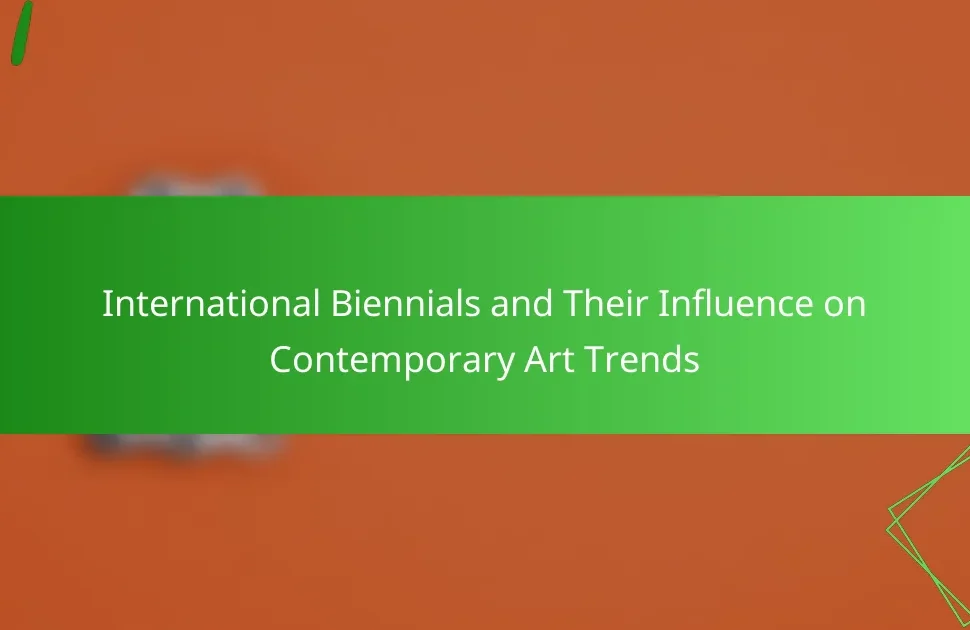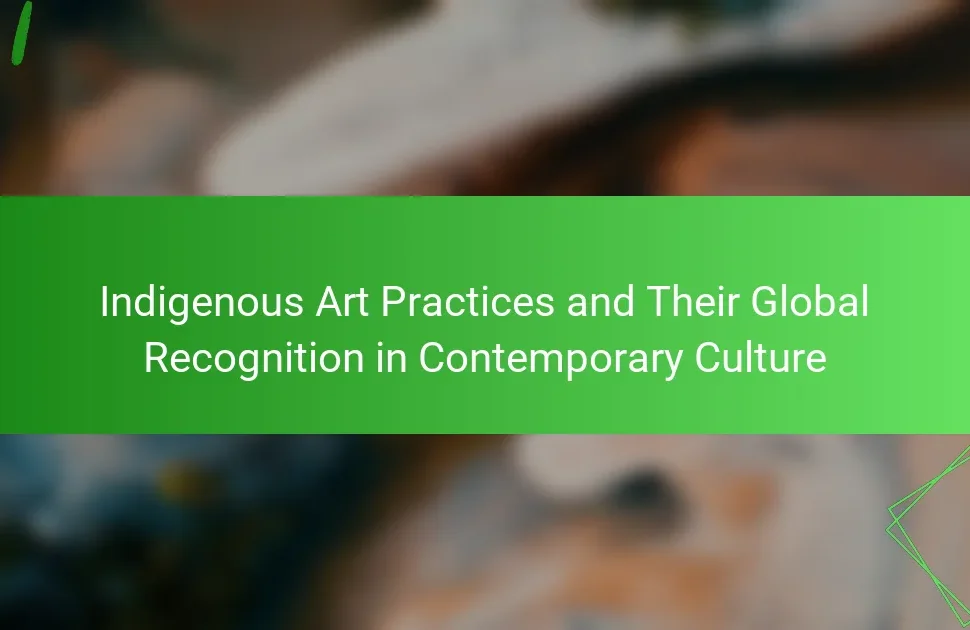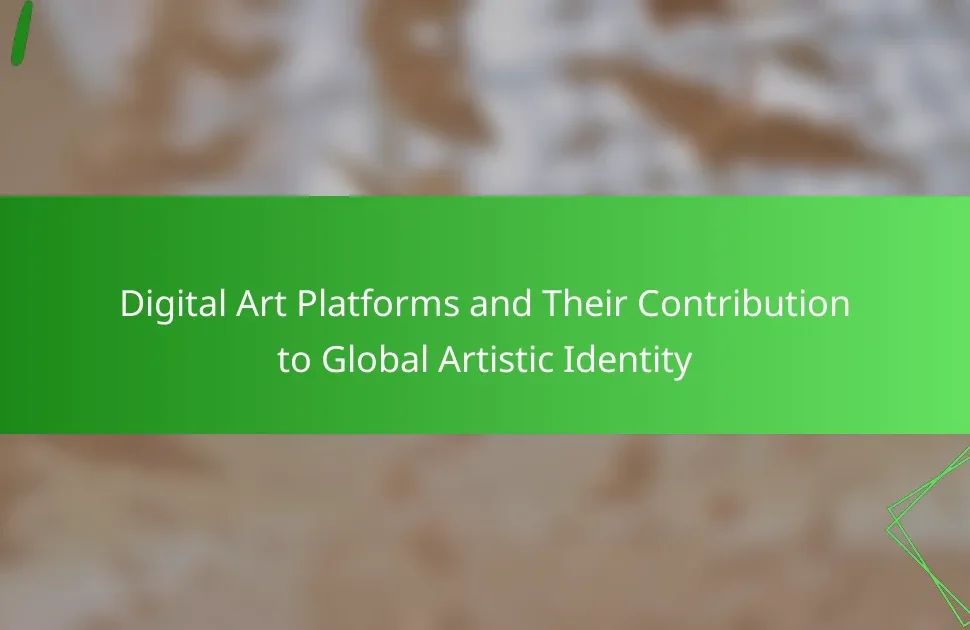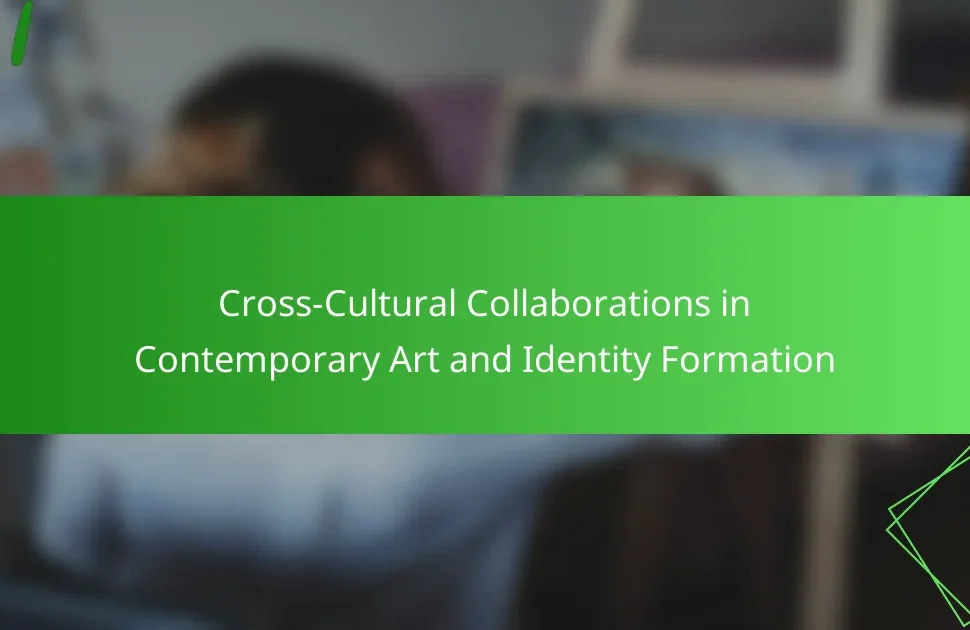Contemporary art movements play a crucial role in shaping cultural identity by reflecting societal values and challenging norms. This article explores how globalization influences artistic expression, the impact of art on personal identity, and the ways contemporary movements address social issues. It also examines the role of cultural institutions in supporting these movements and highlights future trends in inclusivity and technology integration. Through these lenses, we can better understand the dynamic relationship between contemporary art and identity.
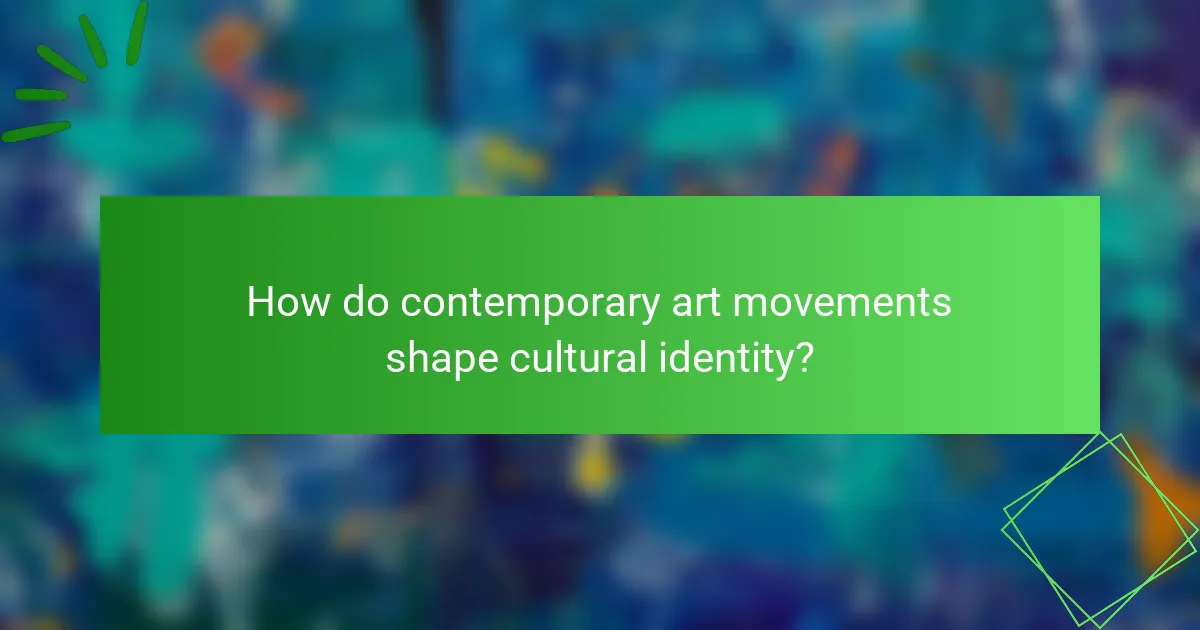
How do contemporary art movements shape cultural identity?
Contemporary art movements significantly influence cultural identity by reflecting societal values and challenging norms. These movements, such as street art and conceptual art, foster dialogue about identity, diversity, and social issues. They encourage individuals to express their experiences and perspectives, shaping a collective cultural narrative. As a result, contemporary art serves as a medium for exploring and redefining identity across various communities.
What are the defining characteristics of contemporary art movements?
Contemporary art movements are defined by their diversity, innovation, and engagement with social issues. These movements reflect cultural identity through various mediums, challenging traditional aesthetics and encouraging dialogue.
Key characteristics include the use of mixed media, which blends various artistic forms to create unique expressions. Additionally, many contemporary artists focus on themes of identity, globalization, and technology, often incorporating personal narratives into their work.
Another defining aspect is the emphasis on audience interaction, where viewers are invited to participate, blurring the lines between observer and creator. This participatory approach fosters a deeper connection between art and cultural identity.
Finally, contemporary art movements often embrace a global perspective, showcasing influences from different cultures and promoting inclusivity in the art world. This characteristic enhances the richness of contemporary art and its ability to resonate with diverse audiences.
Which contemporary art movements have had the most significant cultural impact?
Contemporary art movements such as Abstract Expressionism, Pop Art, and Street Art have significantly influenced cultural identity. Abstract Expressionism emphasized personal expression and emotional depth, reshaping perceptions of individuality. Pop Art challenged traditional boundaries, merging commercial and fine art, reflecting consumer culture. Street Art brought art to public spaces, democratizing access and fostering community engagement. Each movement has contributed to the ongoing dialogue about identity, society, and cultural values.
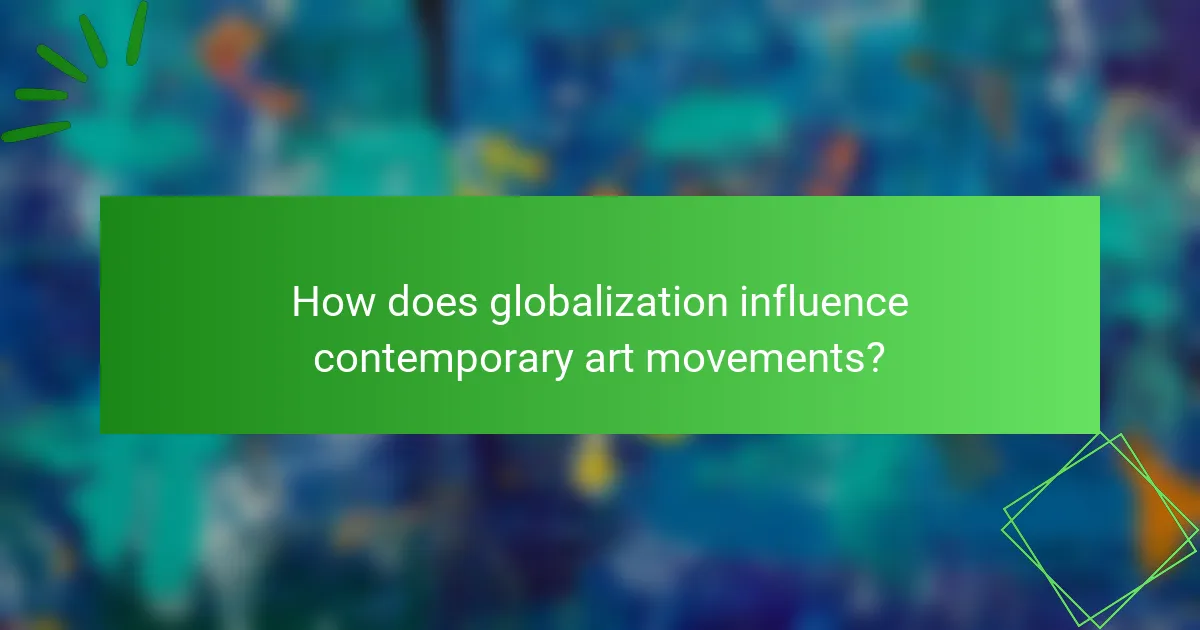
How does globalization influence contemporary art movements?
Globalization significantly shapes contemporary art movements by fostering cross-cultural exchanges and diverse influences. Artists draw inspiration from global narratives, leading to hybrid styles that reflect multicultural identities. The accessibility of digital platforms allows for wider dissemination of artistic expressions, connecting creators worldwide. This interconnectedness enhances dialogue about identity, challenging traditional art forms and encouraging innovation. As a result, contemporary art becomes a powerful medium for exploring and redefining cultural identity in a global context.
What role do social media platforms play in the dissemination of contemporary art?
Social media platforms significantly enhance the dissemination of contemporary art by providing accessible channels for artists and audiences. These platforms enable artists to showcase their work to global audiences, fostering engagement and community.
The visual nature of platforms like Instagram and Pinterest aligns well with the aesthetics of contemporary art, allowing for immediate sharing and interaction. Artists can build personal brands and connect with followers, which can lead to opportunities for collaboration and exhibition.
Moreover, social media facilitates real-time feedback and dialogue, which can influence artistic direction and trends. The viral nature of content can elevate lesser-known artists, democratizing exposure within the art community.
Lastly, social media serves as a platform for discourse on cultural identity and social issues, amplifying the impact of contemporary art movements on societal narratives.
How do local cultures adapt global art trends?
Local cultures adapt global art trends by incorporating their unique traditions and values. This fusion creates a distinctive identity that reflects both local heritage and contemporary influences. For instance, artists may blend traditional techniques with modern themes, resulting in innovative works that resonate with diverse audiences. This adaptation often highlights the root attribute of cultural identity while showcasing unique attributes that differentiate local expressions. As a result, global art movements become localized, enriching the cultural landscape and fostering dialogue between different artistic communities.
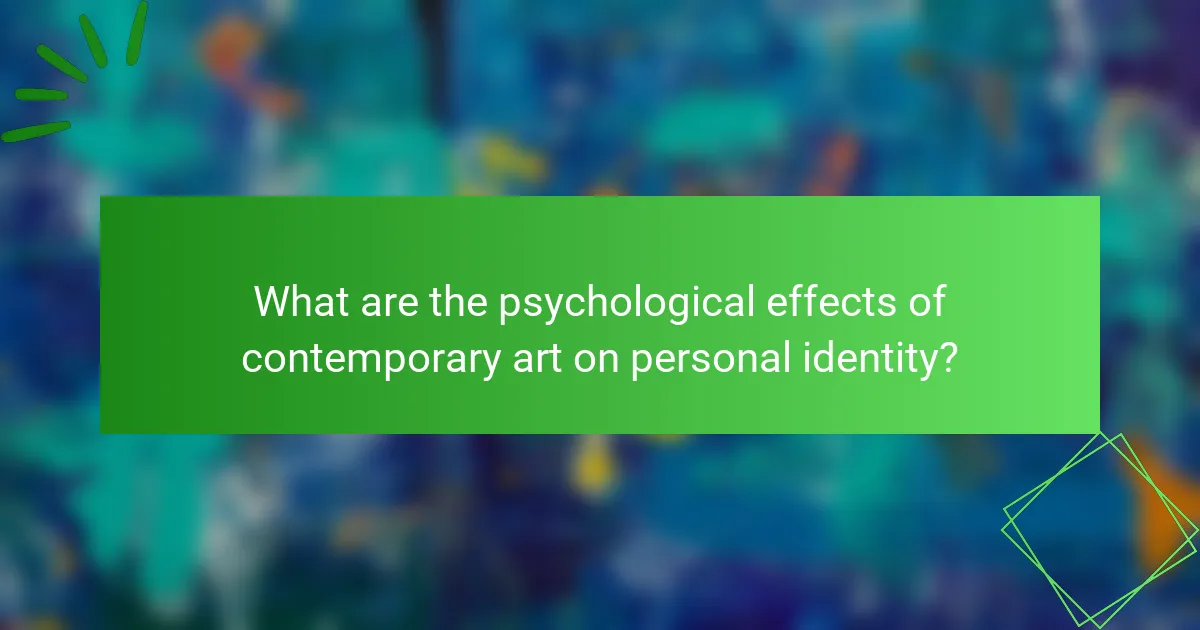
What are the psychological effects of contemporary art on personal identity?
Contemporary art can significantly influence personal identity by challenging perceptions and encouraging self-reflection. It fosters emotional connections, prompting individuals to explore their beliefs and values. This engagement can lead to a redefinition of self and community roles, as contemporary art often reflects societal issues and cultural narratives.
Moreover, the unique attribute of contemporary art is its diverse forms, which include installations, performance art, and digital media. These varied expressions allow individuals to find personal resonance, further shaping their identities. As a result, the psychological effects of engaging with contemporary art can lead to enhanced self-awareness and a deeper understanding of one’s place in the world.
How can art serve as a medium for self-expression and identity exploration?
Art serves as a powerful medium for self-expression and identity exploration by allowing individuals to convey personal narratives and cultural backgrounds. Contemporary art movements, such as street art and installation art, emphasize individuality and social commentary. These movements challenge traditional norms, providing diverse perspectives that resonate with various identities. Artists often use their work to reflect personal experiences, fostering connections with audiences who share similar backgrounds or feelings. This interaction reinforces a sense of community and belonging, highlighting the role of art in shaping and expressing identity.
Which contemporary artists focus on identity themes in their work?
Artists like Kehinde Wiley, Mickalene Thomas, and Ai Weiwei focus on identity themes in their work. Their art explores race, gender, and cultural heritage, reflecting contemporary societal issues. Kehinde Wiley’s portraits challenge traditional representations by featuring people of color in classical poses. Mickalene Thomas utilizes vibrant colors and materials to highlight female identity and empowerment. Ai Weiwei addresses political identity and freedom of expression through provocative installations. Each artist uniquely contributes to the dialogue on identity in contemporary art.
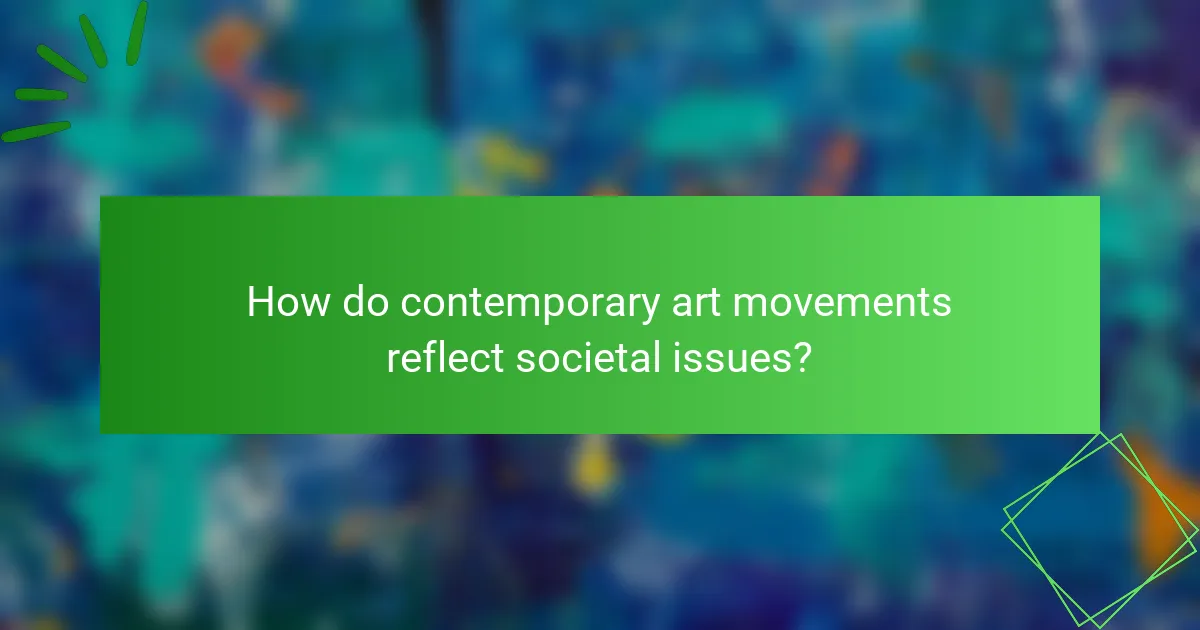
How do contemporary art movements reflect societal issues?
Contemporary art movements mirror societal issues by challenging norms and provoking thought. Artists address themes such as identity, inequality, and environmental concerns, reflecting the complexities of modern life. For example, movements like street art highlight social justice, while conceptual art critiques consumerism. These expressions foster dialogue and awareness, making art a powerful vehicle for societal reflection.
What are the connections between contemporary art and political activism?
Contemporary art often serves as a powerful medium for political activism, fostering dialogue and challenging societal norms. Artists utilize various forms to address issues like inequality and human rights, influencing public perception and policy. For instance, street art has transformed urban spaces into platforms for protest, while installations can provoke critical thought on systemic injustices. The integration of identity politics within contemporary movements highlights the unique attributes of marginalized voices, amplifying their narratives. As a result, the relationship between art and activism continues to evolve, reflecting and shaping cultural landscapes.
How do contemporary art movements address issues of race and gender?
Contemporary art movements address issues of race and gender by challenging societal norms and promoting inclusivity. Artists often use their work to critique systemic inequalities and highlight marginalized voices. For instance, movements like Black Lives Matter Art and Feminist Art have emerged, emphasizing representation and social justice. These movements foster dialogue about identity, encouraging audiences to reflect on their own perceptions and biases. As a result, contemporary art becomes a powerful tool for advocacy and change in cultural narratives surrounding race and gender.
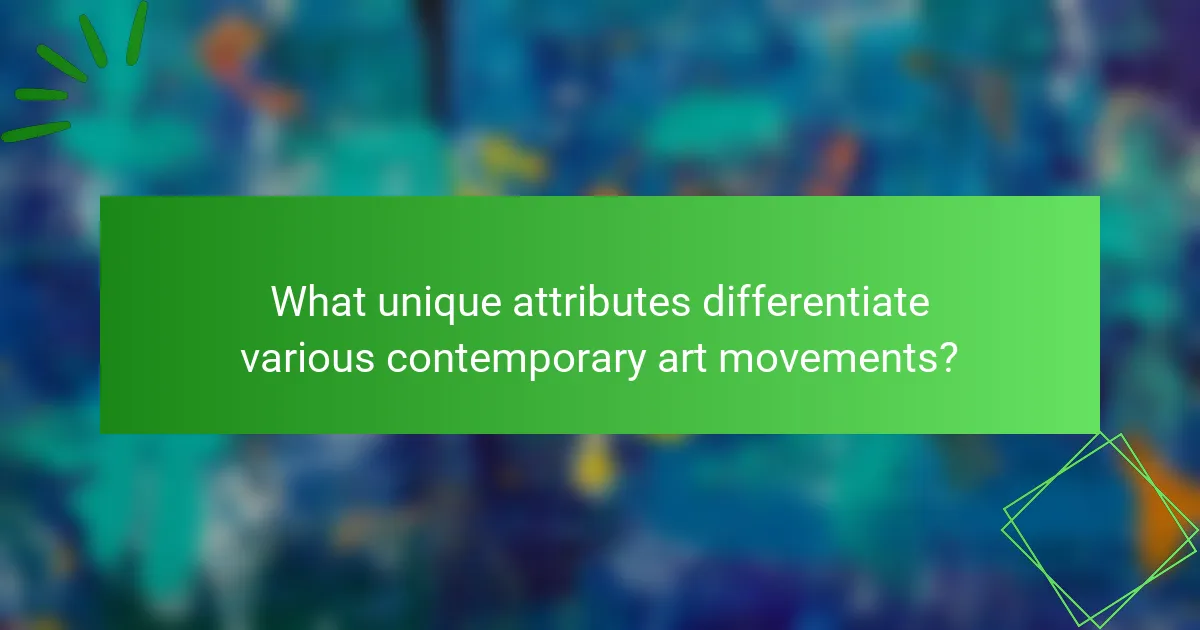
What unique attributes differentiate various contemporary art movements?
Contemporary art movements are distinguished by unique attributes such as style, technique, and thematic focus. For example, Abstract Expressionism emphasizes spontaneous creation, while Minimalism prioritizes simplicity and reduction. These differences reflect cultural contexts and identities, shaping societal perceptions of art. Additionally, movements like Street Art challenge traditional art spaces, fostering community engagement and dialogue. Each movement’s unique attributes contribute to its cultural impact, influencing how identity is expressed and understood in contemporary society.
How do specific movements like Street Art or Digital Art contribute uniquely to identity discourse?
Street art and digital art uniquely contribute to identity discourse by challenging societal norms and fostering community engagement. Street art often reflects local culture and social issues, giving voice to marginalized communities. Digital art, on the other hand, transcends geographical boundaries, allowing for diverse expressions of identity in a global context. Both movements enable dialogue around identity, encouraging personal and collective narratives. Their accessibility and adaptability make them powerful tools for identity exploration and cultural commentary.
What are the rare artistic techniques used in contemporary art that challenge traditional identity representations?
Contemporary art employs rare techniques that challenge traditional identity representations, such as glitch art, bio-art, and immersive installations. Glitch art disrupts digital imagery to question authenticity, while bio-art incorporates living organisms to explore identity’s biological aspects. Immersive installations engage viewers physically and emotionally, altering perceptions of self and society. These techniques foster dialogue around identity, pushing boundaries and redefining cultural narratives.
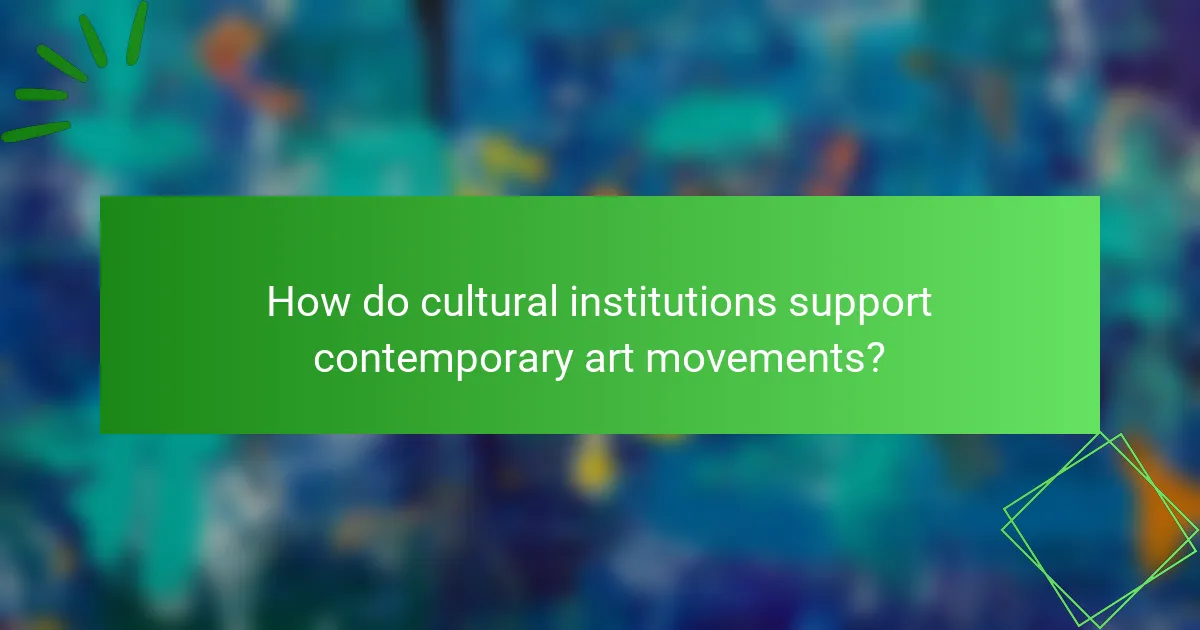
How do cultural institutions support contemporary art movements?
Cultural institutions play a vital role in supporting contemporary art movements by providing funding, exhibition spaces, and educational programs. They foster dialogue between artists and the public, enhancing cultural identity. Institutions like museums and galleries often curate exhibitions that showcase diverse artistic expressions, reflecting societal issues and trends. By promoting inclusivity, they help amplify underrepresented voices within the contemporary art landscape. Additionally, partnerships with artists and communities can lead to innovative projects that challenge traditional narratives and encourage new forms of engagement with art.
What role do museums and galleries play in promoting contemporary art?
Museums and galleries play a crucial role in promoting contemporary art by providing platforms for artists and fostering public engagement. They curate exhibitions that reflect current social issues, encouraging dialogue and reflection.
Through educational programs, these institutions enhance understanding of contemporary art movements, shaping cultural identity. They often support emerging artists, offering visibility and resources that can elevate their careers.
Additionally, museums and galleries serve as community hubs, where diverse audiences can experience and interact with contemporary art, creating a shared cultural space. Their role in preservation and documentation of contemporary art movements ensures that these expressions are recognized and valued for future generations.
How do art fairs and biennials influence contemporary art trends?
Art fairs and biennials significantly shape contemporary art trends by showcasing diverse artistic expressions and fostering global dialogue. These events highlight emerging artists and innovative practices, influencing public perception and market dynamics.
They serve as platforms for cultural exchange, allowing artists to connect with curators, collectors, and audiences. This interaction can lead to the emergence of unique movements, reflecting societal changes and identity explorations.
Moreover, participation in these events often enhances an artist’s visibility, creating opportunities for collaborations and exhibitions. As a result, trends seen at art fairs and biennials frequently permeate mainstream culture, impacting artistic directions worldwide.
The unique attribute of these events lies in their ability to set the stage for groundbreaking works that challenge traditional narratives, making them pivotal in the evolution of contemporary art.
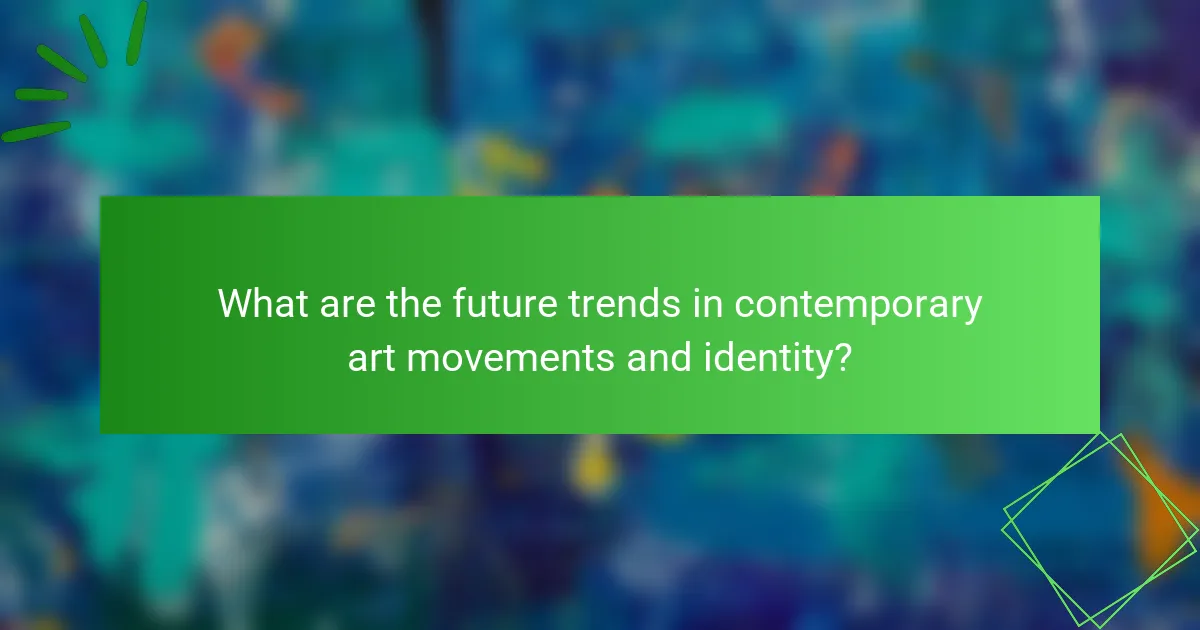
What are the future trends in contemporary art movements and identity?
Future trends in contemporary art movements focus on inclusivity, technology integration, and environmental themes. Artists increasingly explore identity through diverse perspectives, reflecting societal changes. Digital art and virtual reality are gaining prominence, allowing for immersive experiences that challenge traditional boundaries. Additionally, movements addressing climate change and social justice are shaping artistic narratives, emphasizing the role of art in activism.
Which emerging artists are redefining cultural identity through contemporary art?
Emerging artists are redefining cultural identity through contemporary art by exploring themes of heritage, migration, and social justice. These artists challenge traditional narratives and provide new perspectives on identity. For instance, artists like Ai Weiwei and Shirin Neshat use their work to address political issues and cultural displacement. Their art often reflects personal experiences that resonate with broader societal themes, fostering dialogue about identity in a globalized world. Additionally, the rise of digital platforms allows diverse voices to reach wider audiences, enhancing the impact of contemporary art on cultural identity.
What best practices can artists follow to engage with cultural identity in their work?
Artists can engage with cultural identity by incorporating personal narratives, exploring heritage, and addressing social issues. They should embrace authenticity, utilize diverse mediums, and collaborate with community members. This approach fosters deeper connections and promotes cultural dialogue. Engaging with local traditions and histories can also enhance the work’s relevance and impact. By valuing unique perspectives, artists contribute to a richer cultural landscape.
